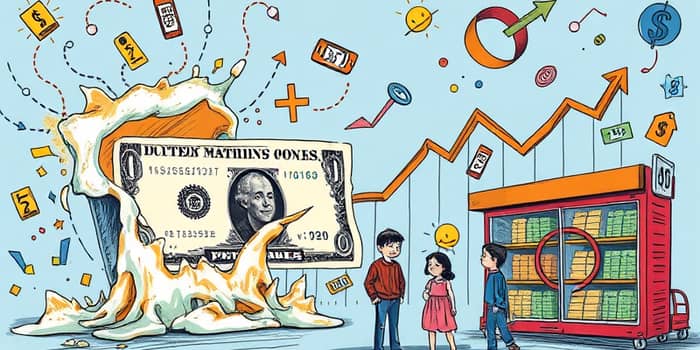
Inflation shapes everyday life by reducing the purchasing power of money. Consumers feel the pinch as prices of essential goods and services climb higher, stretching budgets and altering lifestyle choices. This article examines key concepts and mechanisms behind inflation, supported by recent data, real-world examples, and policy responses, offering readers practical insights to navigate an evolving economic landscape.
Inflation refers to the average rise in consumer prices over time, tracked by indices like the Consumer Price Index (CPI) or the PCE Deflator. It signifies a decline in purchasing power, meaning each currency unit buys fewer goods and services as prices climb.
Purchasing power reflects the real value of earned income. When inflation accelerates, wages may not keep pace, leading to a net loss of buying capacity. Over time, this erosion can reshape consumption patterns, savings behavior, and overall economic well-being.
After peaking at 9.1% in mid-2022—the highest since 1981—inflation eased to 6.5% by the end of that year and hovered around 3% in late 2024. As of March 2025, U.S. consumer prices were 2.4% higher than a year earlier, nearing the Federal Reserve’s 2% target.
Despite nominal wages rising 17.3% between December 2020 and December 2024, the 21.2% increase in overall prices resulted in a loss of real purchasing power of 3.2% nationally. Regional disparities were stark: Baltimore saw a 14% drop in real wages, Dallas 12.1%, and Boston 11.2%, while Tampa reported a 3.5% gain and Houston 6.3%.
Lower-income households allocate a larger share of their budgets to essentials such as food, energy, and housing, whose prices can be highly volatile. Without assets like property or stocks, these families have fewer hedges against rising costs, deepening economic strain.
Economists use multiple indexes—CPI and the PCE Deflator—to gauge inflation’s pace and its impact on purchasing power. Policymakers rely on these measures to craft monetary strategies designed to protect consumers and savers.
Cost-of-living adjustments, such as Social Security COLA, tie benefits to inflation readings and can partially offset losses. Central banks adjust interest rates to manage demand and stabilize prices over time.
Forecasts for late 2025 project headline and core inflation (PCE Deflator) averaging around 2.5% year-over-year. However, sticky inflation and future growth in housing costs or commodity prices could sustain pressures on purchasing power.
Unexpected shocks—geopolitical events or new tariff policies—can reignite inflation surges. Consumers and policymakers must remain vigilant, balancing strategies that support wage growth, stabilize markets, and maintain confidence in the economy.
Inflation’s gradual erosion of purchasing power is a pervasive force impacting households, businesses, and governments. By understanding the mechanisms behind price rises, monitoring key statistics, and leveraging policy tools, individuals can better protect their finances. Staying informed, advocating for fair wage growth, and supporting evidence-based monetary policy are essential steps toward preserving the value of money in an ever-changing economic environment.
References













